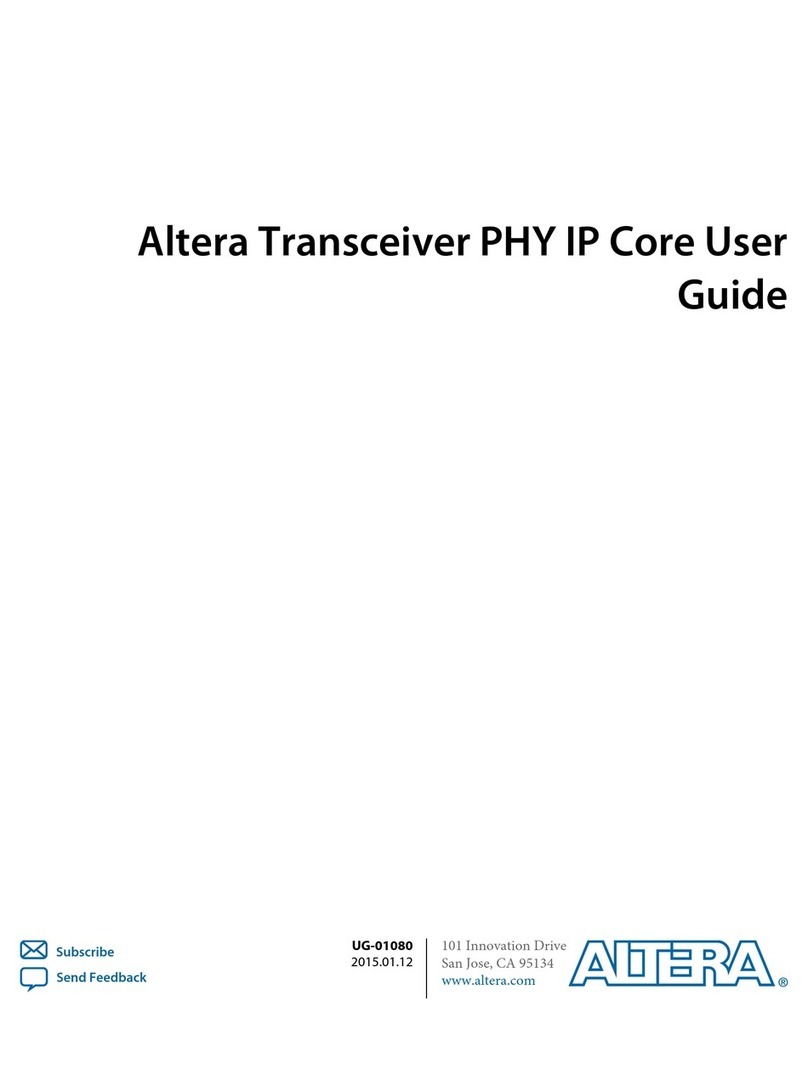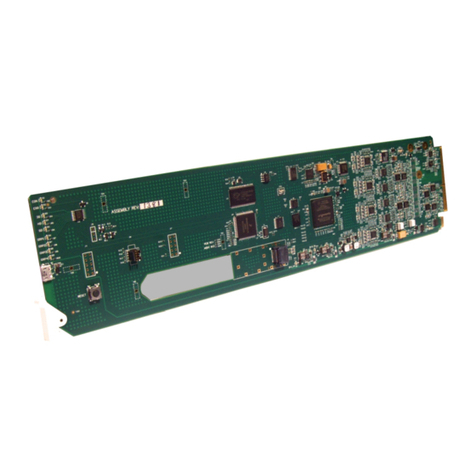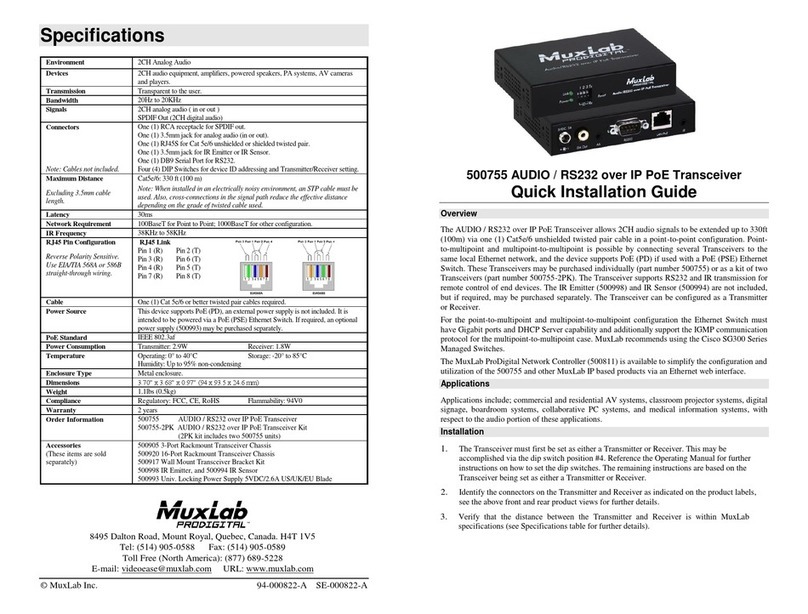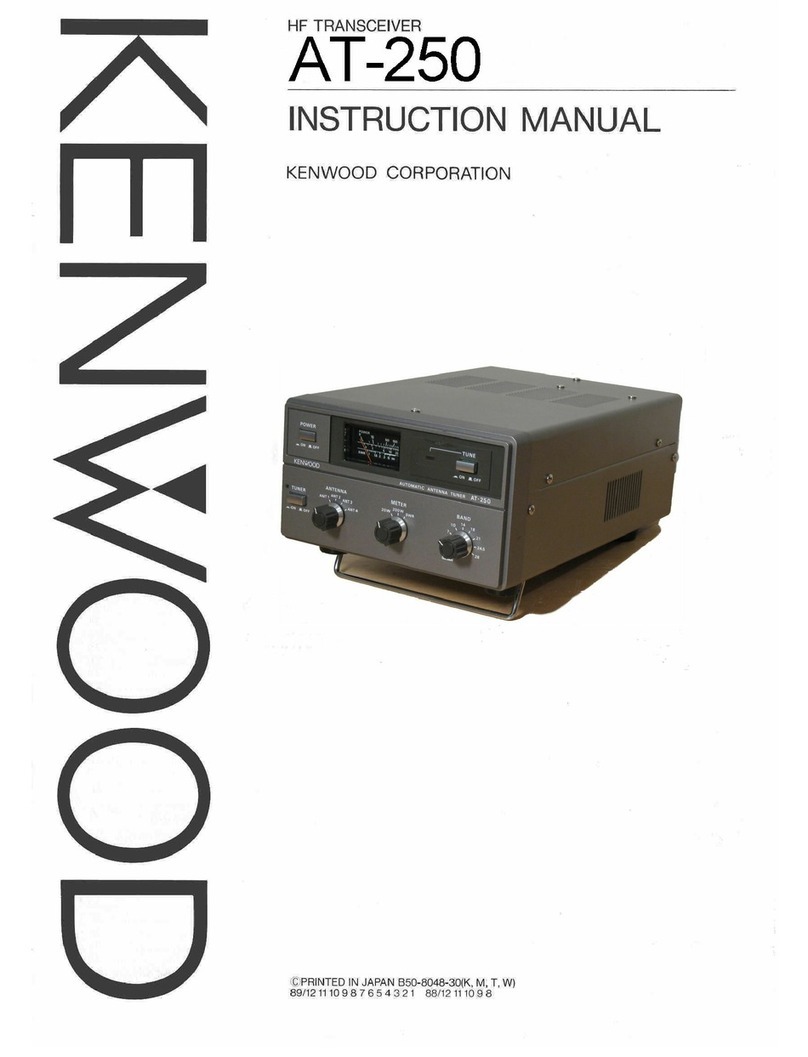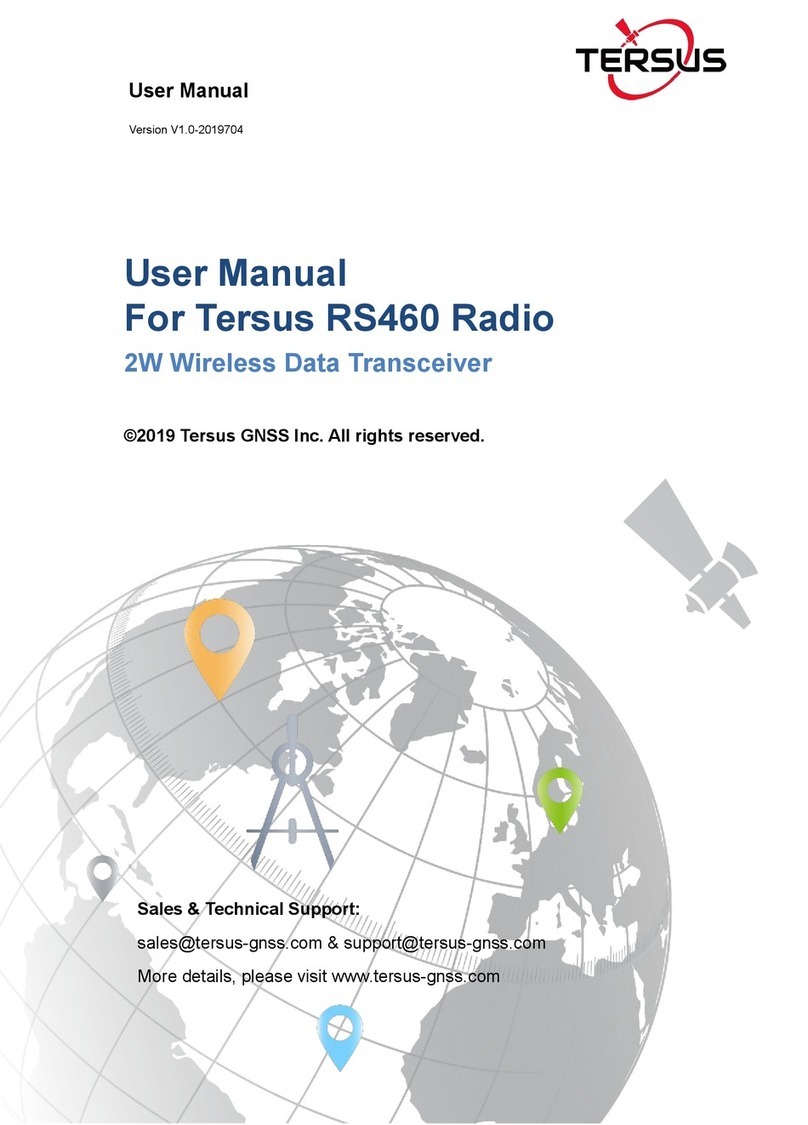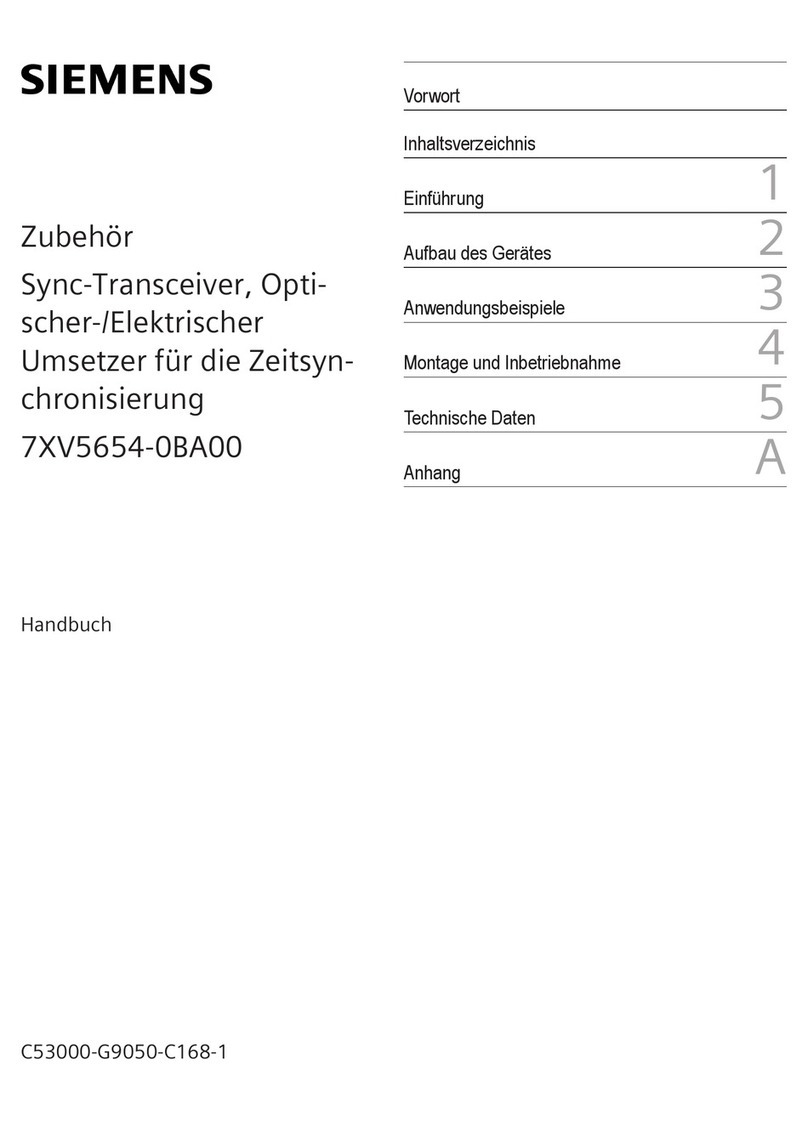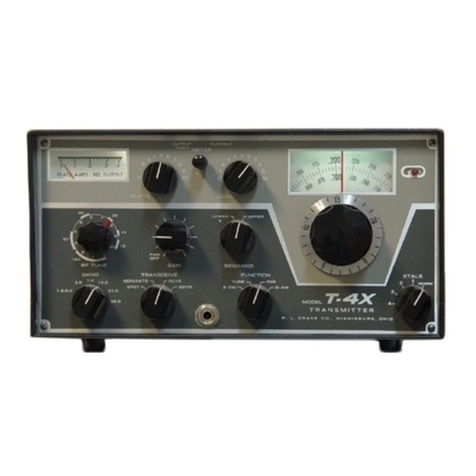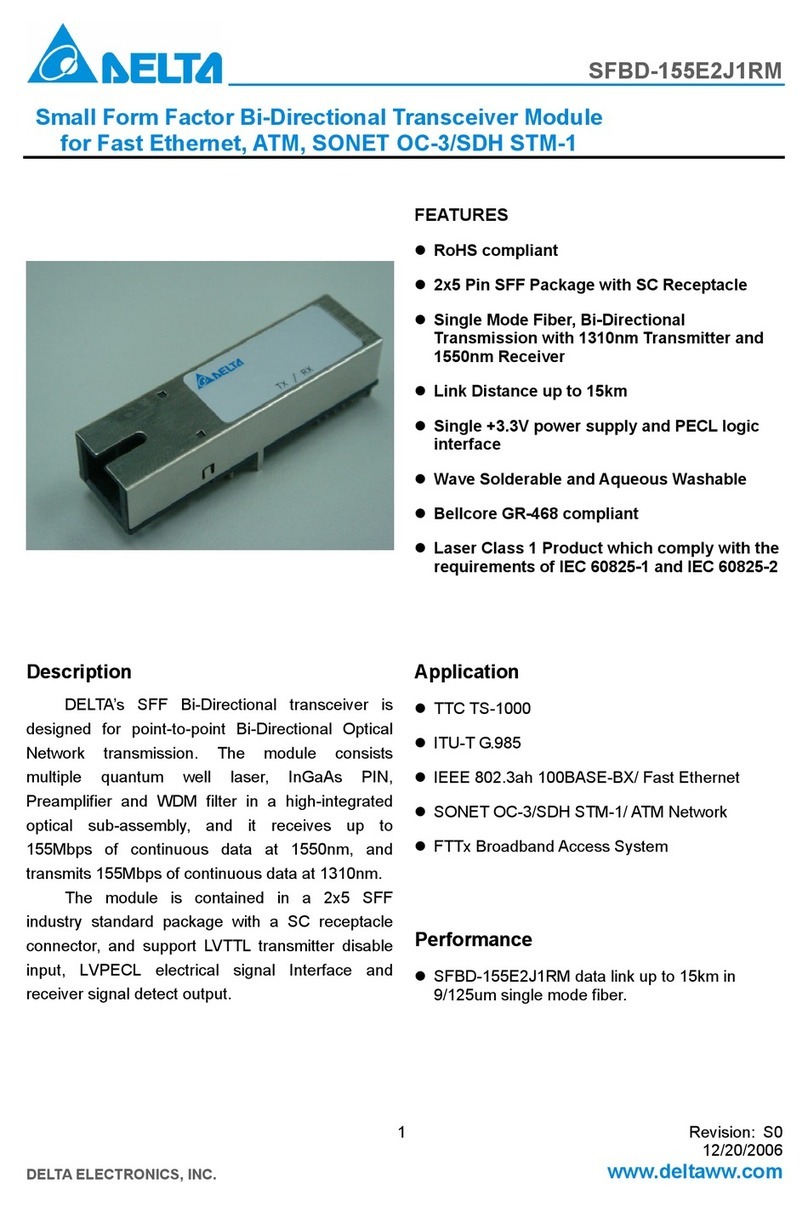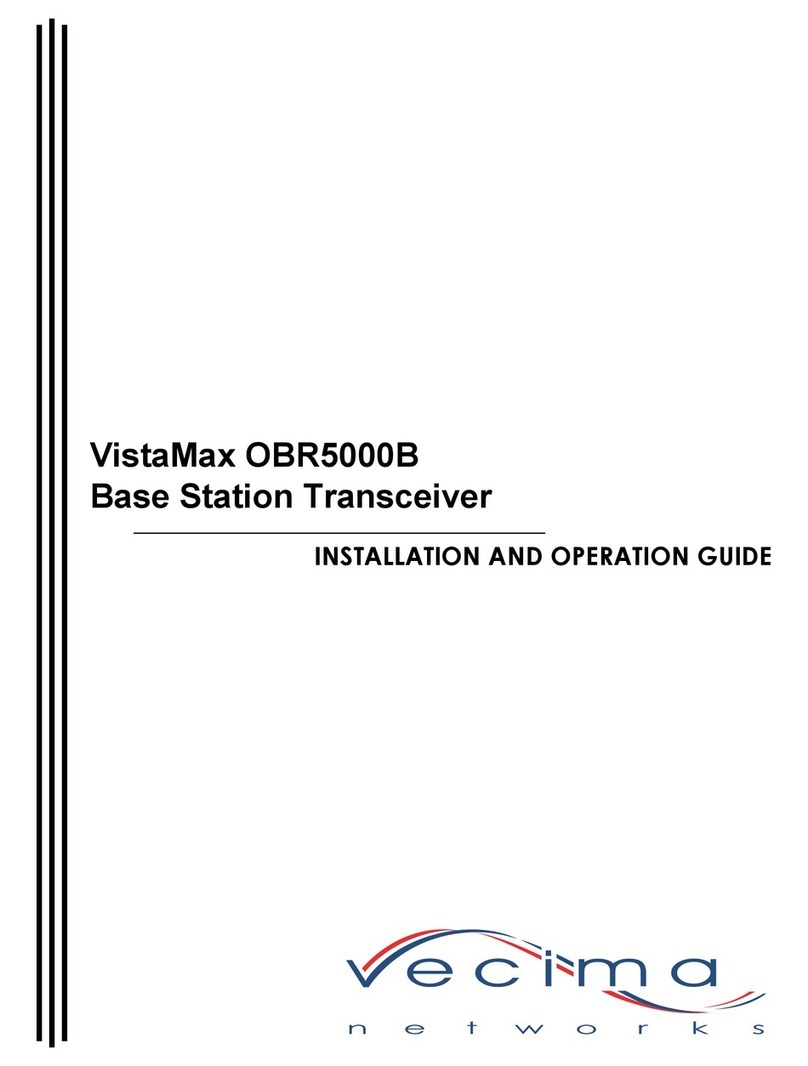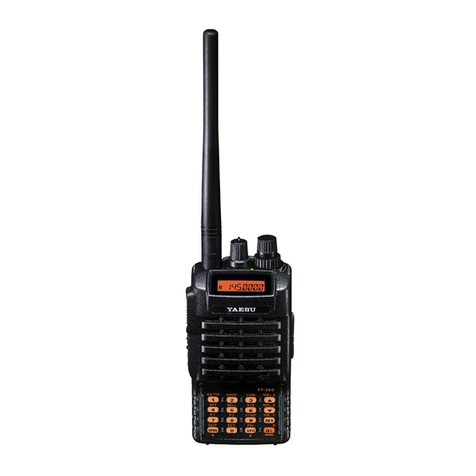Kongsberg Simrad RS86 User manual

ALWAYS AT THE FOREFRONT OF TECHNOLOGY


Instruction Manual
III
Simrad RS86
VHF Radio System
MANUAL

RS86 VHF
IV Part No. E04461 Issue 1.0 08/05/03 MDL
The technical data, information and illustrations contained in this publication were to the best of our knowledge correct at the time of
going to print. We reserve the right to change specifications, equipment, installation and maintenance instructions without notice as
part of our policy of continuous development and improvement.
No part of this publication may be reproduced, stored in a retrieval system or transmitted in any form, electronic or otherwise without
prior permission from Simrad Ltd.
No liability can be accepted for any inaccuracies or omissions in the publication, although every care has been taken to make it as com-
plete and accurate as possible.
©2003 Simrad Ltd

CONTENTS
1. GENERAL 1.1 Introduction . . . . . . . . . . . . . . . . . . . . . . . . . . . . . . . . . . . . . . 8
1.2 The Simrad integrated system . . . . . . . . . . . . . . . . . . . . . . . 9
1.3 Licensing . . . . . . . . . . . . . . . . . . . . . . . . . . . . . . . . . . . . . . . . 10
1.4 Entering MMSI numbers . . . . . . . . . . . . . . . . . . . . . . . . . . . . 11
1.5 Group ID MMSI . . . . . . . . . . . . . . . . . . . . . . . . . . . . . . . . . . . 11
2. MAIN FUNCTIONS
2.1 General notes . . . . . . . . . . . . . . . . . . . . . . . . . . . . . . . . . . . . . 12
2.2 Switching on & Second Country mode . . . . . . . . . . . . . . . . 12
2.3 Changing channels . . . . . . . . . . . . . . . . . . . . . . . . . . . . . . . . 13
2.3.1 Channel Sets . . . . . . . . . . . . . . . . . . . . . . . . . . . . . . . . . 14
2.4 Volume adjustment . . . . . . . . . . . . . . . . . . . . . . . . . . . . . . . . 15
2.5 Squelch adjustment . . . . . . . . . . . . . . . . . . . . . . . . . . . . . . . . 15
2.6 Dual Watch mode . . . . . . . . . . . . . . . . . . . . . . . . . . . . . . . . . 15
2.7 Tri-Watch mode . . . . . . . . . . . . . . . . . . . . . . . . . . . . . . . . . . . 16
2.8 All Scan mode . . . . . . . . . . . . . . . . . . . . . . . . . . . . . . . . . . . . 17
2.8.1 Dynamic All Scan Inhibit . . . . . . . . . . . . . . . . . . . . . . 17
2.9 Memory Scan mode . . . . . . . . . . . . . . . . . . . . . . . . . . . . . . . . 18
2.9.1 Dynamic Memory Scan Delete . . . . . . . . . . . . . . . . . . 18
2.10 Adjusting backlighting . . . . . . . . . . . . . . . . . . . . . . . . . . . . . 19
2.11 Handset / Fistmike off cradle . . . . . . . . . . . . . . . . . . . . . . . 19
3. MENU MODE
3.1 Scanning . . . . . . . . . . . . . . . . . . . . . . . . . . . . . . . . . . . . . . . . . 20
3.1.1 All Scan inhibit . . . . . . . . . . . . . . . . . . . . . . . . . . . . . . . 21
3.1.2 All Scan reset . . . . . . . . . . . . . . . . . . . . . . . . . . . . . . . . 21
3.1.3 All Scan show . . . . . . . . . . . . . . . . . . . . . . . . . . . . . . . . 22
3.1.4 Memory Scan select . . . . . . . . . . . . . . . . . . . . . . . . . . . 22
3.1.5 Memory Scan clear . . . . . . . . . . . . . . . . . . . . . . . . . . . 23
3.1.6 Memory Scan show . . . . . . . . . . . . . . . . . . . . . . . . . . . 23
3.1.7 Scan dwell time . . . . . . . . . . . . . . . . . . . . . . . . . . . . . . 23
3.2 Numbers . . . . . . . . . . . . . . . . . . . . . . . . . . . . . . . . . . . . . . . . . 24
3.2.1 Ship’s MMSI . . . . . . . . . . . . . . . . . . . . . . . . . . . . . . . . . 24
3.2.2 ATIS number . . . . . . . . . . . . . . . . . . . . . . . . . . . . . . . . 25
3.2.3 Group MMSI . . . . . . . . . . . . . . . . . . . . . . . . . . . . . . . . 26
3.3 VHF items . . . . . . . . . . . . . . . . . . . . . . . . . . . . . . . . . . . . . . . 27
3.3.1 User channel . . . . . . . . . . . . . . . . . . . . . . . . . . . . . . . . . 27
3.3.2 Position view . . . . . . . . . . . . . . . . . . . . . . . . . . . . . . . . 28
3.3.3 Last used channel . . . . . . . . . . . . . . . . . . . . . . . . . . . . 28
3.3.4 Interrupt intercom . . . . . . . . . . . . . . . . . . . . . . . . . . . . 29
3.3.5 Auxiliary audio . . . . . . . . . . . . . . . . . . . . . . . . . . . . . . 29
3.3.6 Speaker settings . . . . . . . . . . . . . . . . . . . . . . . . . . . . . . 30
Instruction Manual
V

CONTENTS ctd -
4. DSC FUNCTIONS
4.1 General . . . . . . . . . . . . . . . . . . . . . . . . . . . . . . . . . . . . . . . . . . 31
4.2 Making a call . . . . . . . . . . . . . . . . . . . . . . . . . . . . . . . . . . . . . 31
4.2.1 Individual Routine call . . . . . . . . . . . . . . . . . . . . . . . . 31
4.2.2 Public Correspondence call . . . . . . . . . . . . . . . . . . . . . 32
4.2.3 All Ships Safety call . . . . . . . . . . . . . . . . . . . . . . . . . . . 34
4.2.4 All Ships Urgency call . . . . . . . . . . . . . . . . . . . . . . . . . 34
4.2.5 Group call . . . . . . . . . . . . . . . . . . . . . . . . . . . . . . . . . . . 35
4.2.6 Distress Alert call . . . . . . . . . . . . . . . . . . . . . . . . . . . . . 35
4.3 Receiving a call . . . . . . . . . . . . . . . . . . . . . . . . . . . . . . . . . . . 37
4.3.1 Individual Routine call . . . . . . . . . . . . . . . . . . . . . . . . 37
4.3.2 Public Correspondence call . . . . . . . . . . . . . . . . . . . . . 38
4.3.3 All Ships Safety call . . . . . . . . . . . . . . . . . . . . . . . . . . . 39
4.3.4 All Ships Urgency call . . . . . . . . . . . . . . . . . . . . . . . . . 39
4.3.5 Group call . . . . . . . . . . . . . . . . . . . . . . . . . . . . . . . . . . . 40
4.3.6 Distress Alert call . . . . . . . . . . . . . . . . . . . . . . . . . . . . . 41
4.3.7 Distress Alert acknowledgement . . . . . . . . . . . . . . . . 42
4.3.8 Distress Relay call . . . . . . . . . . . . . . . . . . . . . . . . . . . . 43
4.4 Viewing the Call Log . . . . . . . . . . . . . . . . . . . . . . . . . . . . . . . 44
4.5 Position over 4 hours old . . . . . . . . . . . . . . . . . . . . . . . . . . . 45
5. THE DIRECTORY
5.1 Switching between the directories . . . . . . . . . . . . . . . . . . . . 46
5.2 Viewing the directory . . . . . . . . . . . . . . . . . . . . . . . . . . . . . . 46
5.3 Entering a number . . . . . . . . . . . . . . . . . . . . . . . . . . . . . . . . . 47
5.4 Editing a number . . . . . . . . . . . . . . . . . . . . . . . . . . . . . . . . . . 48
6. MISCELLANEOUS FUNCTIONS
6.1 Selecting Weather Watch . . . . . . . . . . . . . . . . . . . . . . . . . . . . 49
6.1.1 Weather Watch alert . . . . . . . . . . . . . . . . . . . . . . . . . . . 49
6.2 Security mode (voice scrambler) . . . . . . . . . . . . . . . . . . . . . 50
6.3 Editing Latitude, Longitude and UTC . . . . . . . . . . . . . . . . . 50
6.4 Toggling between Lat/Long and UTC views . . . . . . . . . . . 51
6.5 Intercom . . . . . . . . . . . . . . . . . . . . . . . . . . . . . . . . . . . . . . . . . 52
6.5.1 Making an intercom call . . . . . . . . . . . . . . . . . . . . . . . 52
6.5.2 Receiving an intercom call . . . . . . . . . . . . . . . . . . . . . 53
6.6 Loudhailer / Foghorn . . . . . . . . . . . . . . . . . . . . . . . . . . . . . . 54
6.6.1 Loudhailer . . . . . . . . . . . . . . . . . . . . . . . . . . . . . . . . . . 54
6.6.2 Foghorn . . . . . . . . . . . . . . . . . . . . . . . . . . . . . . . . . . . . . 55
6.7 station speaker mute . . . . . . . . . . . . . . . . . . . . . . . . . . . . . . . 56
6.8 iDSC . . . . . . . . . . . . . . . . . . . . . . . . . . . . . . . . . . . . . . . . . . . . 56
RS86 VHF
6Part No. E04461

CONTENTS ctd -
7. INSTALLATION
7.1 Physical installation . . . . . . . . . . . . . . . . . . . . . . . . . . . . . . . . 57
7.1.2 Transceiver installation . . . . . . . . . . . . . . . . . . . . . . . . 57
7.1.2 Control panel installation . . . . . . . . . . . . . . . . . . . . . . 58
7.2 Electronic installation . . . . . . . . . . . . . . . . . . . . . . . . . . . . . . 59
7.2.1 Control panel . . . . . . . . . . . . . . . . . . . . . . . . . . . . . . . . 60
7.2.2 Loudspeakers . . . . . . . . . . . . . . . . . . . . . . . . . . . . . . . . 61
7.2.3 Intercoms . . . . . . . . . . . . . . . . . . . . . . . . . . . . . . . . . . . 61
7.2.4 Loudhailer/Foghorns . . . . . . . . . . . . . . . . . . . . . . . . . 62
7.2.5 Remote foghorn button . . . . . . . . . . . . . . . . . . . . . . . . 62
7.2.6 Auxiliary audio input . . . . . . . . . . . . . . . . . . . . . . . . . 63
7.2.7 NMEA0183 input . . . . . . . . . . . . . . . . . . . . . . . . . . . . . 63
7.2.8 iDSC output . . . . . . . . . . . . . . . . . . . . . . . . . . . . . . . . . 64
7.2.9 Future options . . . . . . . . . . . . . . . . . . . . . . . . . . . . . . . 64
7.2.10 Summary . . . . . . . . . . . . . . . . . . . . . . . . . . . . . . . . . . . 65
7.2.11 Cable strain relief . . . . . . . . . . . . . . . . . . . . . . . . . . . . 66
7.3 Antenna installation . . . . . . . . . . . . . . . . . . . . . . . . . . . . . . . 66
7.4 Electrical interference suppression . . . . . . . . . . . . . . . . . . . . 68
8. APPENDIX 8.1 Operating procedures . . . . . . . . . . . . . . . . . . . . . . . . . . . . . . 69
8.1.1 Sending a distress alert . . . . . . . . . . . . . . . . . . . . . . . . 69
8.1.2 Acknowledging and relaying a distress alert . . . . . . 69
8.1.3 Cancelling a distress alert . . . . . . . . . . . . . . . . . . . . . . 70
8.1.4 Alerting all vessels within range . . . . . . . . . . . . . . . . 70
8.1.5 Calling a coast station . . . . . . . . . . . . . . . . . . . . . . . . . 70
8.1.6 Making an intership call . . . . . . . . . . . . . . . . . . . . . . . 70
8.2 NMEA sentences received . . . . . . . . . . . . . . . . . . . . . . . . . . 70
8.3 Transmission range . . . . . . . . . . . . . . . . . . . . . . . . . . . . . . . . 71
8.4 Frequency of channels . . . . . . . . . . . . . . . . . . . . . . . . . . . . . . 72
8.5 Fault finding . . . . . . . . . . . . . . . . . . . . . . . . . . . . . . . . . . . . . . 73
8.6 Optional accessories . . . . . . . . . . . . . . . . . . . . . . . . . . . . . . . 74
8.7 Technical specification . . . . . . . . . . . . . . . . . . . . . . . . . . . . . . 75
8.8 Dimensions . . . . . . . . . . . . . . . . . . . . . . . . . . . . . . . . . . . . . . . 75
8.9 Declaration of Conformity . . . . . . . . . . . . . . . . . . . . . . . . . . 76
8.10 Service & warranty . . . . . . . . . . . . . . . . . . . . . . . . . . . . . . . . 77
Instruction Manual
7
Part No. E04461

1 GENERAL
1.1 Introduction
The RS86 is a modular VHF radio and Class D Digital
Selective Calling (DSC) radio telephone system using slimline
control panel to access and control all functions. It supports
the latest GMDSS requirements for non-SOLAS vessels from
the International Maritime Organisation (IMO). It will enable
you to make digitally selected calls, which are quicker and sim-
pler to make than traditional voice calls using Channel 16.
Should a distress situation occur, with the RS86 you can quick-
ly raise an alert, indicating your identity, your position and
automatically establish distress communication on the emer-
gency voice channel.
The RS86 transceiver is supplied with either a telephone hand-
set or a fistmike, and is robustly constructed using a pressure
die cast aluminium case for effective heat dissipation, ensuring
maximum transmission performance even after many hours
constant use.
Thank you for choosing Simrad
If you are pleased with your VHF we hope you will be interest-
ed in our range of marine electronic equipment, which is man-
ufactured to the same high standards as the RS86. Please con-
tact your nearest Simrad Agent for a catalogue showing our
increasing range of high tech navigational instruments, GPS,
autopilots, Radar, Echosounders, Chartplotters and VHF radio
sets.
Simrad operate a policy of continual development and reserve
the right to alter and improve the specification of their prod-
ucts without notice.
RS86 VHF
8Part No. E04461
Fig 1.1 - RS86 control panel

1.2 The Simrad integrated system
The standard RS86 radiotelephone can support up to two sta-
tions with full intercom facility, geographical position input
via NMEA0183 and iDSC integration with Simrad chartplotters
which enables the plotters to display DSC call information.
With the addition of the expansion board, the system can sup-
port an additional two stations, two intercom speakers and for-
ward and aft foghorn/loudhailer speakers in addition to the
standard functions.
Additional stations can either be another RS86 fixed panel dis-
play or an RS87 full function telephone handset allowing great
flexibility in installations (Fig 1.2) -
Instruction Manual
9
Part No. E04461
Fig 1.2 - RS86 system options
DUAL STATION SYSTEM
EXPANDED SYSTEM
BASIC SYSTEM

1.3 Licensing
NOTE Prior to use check the national licensing requirements for the
operator.
In the UK license applications and queries should be made to
the following authority -
Ship Radio Licensing
Radio Licensing Centre
The Post Office
PO Box 1495
Bristol
BS99 3QS
Aset may only be operated by, or under the supervision of a
holder of a Certificate of Competence and Authority to
Operate. This involves a simple examination and an annual
license renewal fee. The VHF only certificate is administered
by the Royal Yachting Association -
Royal Yachting Association
RYA House
Romsey Road
Eastleigh
Hants, SO5 4YA
Holders of the Restricted Certificate of Competence in Radio-
telephony (which covers MF/HF SSB etc), do not need a sepa-
rate VHF certificate.
In all other countries, please contact your regional authority for
information.
RS86 VHF
10 Part No. E04461

1.4 Entering MMSI numbers
At the time of issue of your vessel’s radio license, an MMSI
(Maritime Mobile Service Identifier) must be requested. This is
a nine digit number which must be permanently entered into
the RS86 when the radio is first set up, otherwise the DSC
functions cannot be accessed.
NOTE If the boat or the RS86 are subsequently sold, the radio must
be returned to an authorised Simrad agent for the MMSI num-
ber to be erased and the new owner’s MMSI number entered.
For European leisure vessels fitted with VHF DSC equipment, a
CEPT Short Range Certificate is required by the operator.
Additional requirements, such as GOC or ROC may apply to
operators on commercial vessels. Please enquire with your
local licensing authority for full details.
Refer to section 3.2.1 to enter the vessel’s MMSI number.
1.5 Group ID MMSI
For boats that are part of a flotilla, racing fleet or other group, a
Group ID MMSI number can also be entered which will allow
DSC communication within the group.
NOTE Contact your local authority for rules regarding Group MMSI
allocation.
Refer to section 3.2.3 to enter a Group MMSI number.
Instruction Manual
11
Part No. E04461

2. MAIN FUNCTIONS
2.1 General notes
Although it has many advanced features, the RS86 has been
designed to be as simple and intuitive to operate as possible.
The Shift key is used to access the secondary functions printed
above each key - press and release Shift, then press the appro-
priate key. These secondary functions are shown in this manu-
al in italics (eg Group).
NOTE The Shift key will automatically time out of Shift Mode after
two seconds if another key is not pressed.
At any time, pressing ON/C will cancel the current operation.
The lowest occupied port is the master controller - therefore
any operations initiated on this station will override all other
stations.
CAUTION In order for other users to be able to operate the radio, it is
imperative that the handset/fistmike is replaced in the cradle
after use.
2.2 Switching on & Second Country mode
To turn the radio on, press the ON/C key. The display will
show the control panel software issue number two seconds,
then the station number and software issue number for the
transceiver unit for two seconds.
As a default, the radio switches on tuned to the priority chan-
nel (normally 16). If Last Channel Used mode has been set (see
section 3.3.3) the radio will switch on tuned to the previously
used channel.
The radio stores the previous volume and squelch settings and
will use these on startup.
In countries where it is permitted, the RS86 can operate on a
secondary set of channels, such as the USA channels.
To select the secondary channel table, press Shift followed by
OK. The display will show the channel set selected for two
seconds before reverting to the default display.
NOTE Channels available will depend on programming. Please
enquire with your national licensing authority for details of
permitted channel sets in your own country.
RS86 VHF
12 Part No. E04461

2.3 Changing channels
To select a channel, rotate the channel select knob or enter the
channel number using the numeric keypad (Fig 2.1) -
Instruction Manual
13
Part No. E04461
Fig 2.1 - Selecting a channel
If the channel entered via the keypad is invalid, the display
will show “Invalid Channel” and then revert to the previous
channel.
The priority channel (normally 16) can be selected by pressing
16, which will also set the radio to 25W transmit power.
The preselected User Channel can be directly selected by press-
ing the User key. The display will show “U” next to the chan-
nel number to indicate that it is the User Channel (Fig 2.2).
72
VOLUME 05
SQUELCH 03
INT
U 23
VOLUME 05
SQUELCH 03
INT
16
VOLUME 05
SQUELCH 03
INT
The default setting for the User Channel is 16. Refer to section
3.3.1 for details on setting the User Channel.
Fig 2.2 - User channel selected

2.3.1 Channel Sets
In addition to the standard International Channel, the RS86 can
also be programmed with regional Auxiliary Channels, such as
the marina channels M and M2 in the UK, the USA weather
channels and the fishing or leisure channels in Scandinavia.
To display the channel sets available, press Shift followed by
1W (Ch Set). Press the 1W key or rotate the channel select
knob while still in Shift Mode to scroll through the available
channel sets.
RS86 VHF
14 Part No. E04461
When the required channel set is displayed, select the channel
number using the channel select knob or the numeric keypad -
eg “2” for M2 (Fig 2.4) -
MAR I NAAAAA
MAR I NAAAAA
INT
PR I VATE AAA
Fig 2.3 - Selecting auxiliary channel sets
(sets must be available to be displayed)
Fig 2.4 - Selecting auxiliary channel number
The only exception to this is when selecting UK marina chan-
nel M, which has no number associated with it. Simply select-
ing the marina channel set will automatically select it.
NOTE If no channel is selected within two seconds the radio will
revert to the previous working channel (except for marina
channel M as noted above).
2
MAR I NAAAAA
INT

2.4 Volume adjustment
To adjust the volume, rotate the Volume knob. The display
will show the current volume and squelch levels while the vol-
ume is being adjusted, then return to the default display.
The volume setting can be between 1 and 24 (loud).
2.5 Squelch adjustment
To adjust the squelch setting, rotate the Squelch knob. The dis-
play will show the current squelch and volume levels while the
squelch is being adjusted, then return to the default display.
The squelch setting can be between 0 (open) and 10.
2.6 Dual Watch mode
Dual Watch allows the radio to scan between the selected
working channel and the watch channel (the priority channel -
normally 16).
To enter Dual Watch, select the required working channel, then
press Shift and 3(DW) within two seconds.
If Dual Watch is selected while the handset /fistmike is off cra-
dle, the display will show “Place back on cradle”. If the hand-
set /fistmike is replaced within ten seconds of selecting Dual
Watch, it will automatically initiate Dual Watch when the hand-
set / fistmike is replaced.
The display will show “D/W” - the large digits on the display
indicate the working channel, with the watch channel shown
below in small digits (Fig 2.5) -
Instruction Manual
15
Part No. E04461
6
D/WAAAAA 16
BBBBBBBBBB
INT
DW
Fig 2.5 - Dual Watch mode

If the radio detects a signal on the watch channel, it will lock
onto this and the large digits will change to show the watch
channel.
NOTE All other stations will also show the Dual Watch display.
NOTE Normal VHF functions will not be available when in Dual Watch
mode. To exit Dual Watch press 16, ON/C or lift the handset /
fistmike from the cradle.
2.7 Tri Watch mode
Tri Watch allows the radio to scan between the selected work-
ing channel, the user channel and the watch channel.
NOTE Tri Watch cannot be selected if the user channel is set to Ch16.
To enter Tri Watch, select the required working channel, press
Shift and then press and hold the 3(DW) for two seconds.
If Tri Watch is selected while the handset / fistmike is off cra-
dle, the display will show “Place back on cradle”. If replaced
within ten seconds of selecting Tri Watch, the radio will auto-
matically initiate Tri Watch.
The display will show “T/W” - the large digits on the display
indicate the working channel, with the user channel and watch
channel shown below in small digits (Fig 2.6) -
RS86 VHF
16 Part No. E04461
Press & hold
T/WAAAAA 16
USERBBBBB6
INT 10
Fig 2.6 - Tri Watch mode
If the radio detects a signal on the user or watch channels, it
will lock onto this and the large digits will change to show the
relevant channel.
NOTE All other stations will also show the Tri Watch display.
NOTE Normal VHF functions will not be available when in Tri Watch
mode. To exit Tri Watch press 16, ON/C or lift the handset /
fistmike from the cradle.

If the radio locks onto a busy channel, pressing OK will manu-
ally continue the scan. All Scan will otherwise automatically
restart when the channel becomes clear.
NOTE All other stations will also show the All Scan display.
NOTE While in scan mode, normal VHF functions are not available.
To exit All Scan press 16, ON/C or lift the handset / fistmike
from the cradle.
2.8.1 Dynamic All Scan Inhibit
If the radio is constantly locking onto a busy channel when
scanning, this channel can be inhibited from the scan by press-
ing Shift then 1while locked on that channel.
The display will show “Channel Inhibited” and the channel
will no longer be included in the scan cycle.
The channel can be reinstated using the menu option described
in section 3.1.1.
2.8 All Scan mode
The scan function cycles the RS86 sequentially through each
enabled channel, pausing when a signal is detected.
Press Shift followed by 1(Scan All) to enter All Scan Mode.
If Scan is selected while the handset / fistmike is off cradle, the
display will show “Place back on cradle”. This function will be
cancelled if the handset / fistmike is not returned to the cradle
within 10 seconds.
The display will show “Scan All” on the display. If the radio
detects a signal, it will lock onto this and the large digits will
change to show the relevant channel number (Fig 2.7) -
Instruction Manual
17
Part No. E04461
67
INT SCAN
ALL
Fig 2.7 - All Scan mode

2.9 Memory Scan mode
Memory Scan gives the option of scanning a preprogrammed
set of channels specified by the user (see sections 3.1.4 and
3.1.5).
Press Shift then 2(Scan M) to enter Memory scan mode.
If Memory Scan is selected while the handset / fistmike is off
cradle, the display will show “Place back on cradle”. If
replaced within ten seconds of selecting Memory Scan, the
radio will automatically initiate Memory Scan.
The display will show “Scan M” on the display. If the radio
detects a signal, it will lock onto this and the large digits will
change to show the relevant channel (Fig 2.8) -
If the radio locks onto a busy channel, pressing OK will manu-
RS86 VHF
18 Part No. E04461
68
INT SCAN
M
Fig 2.8 - Memory Scan mode
ally continue the scan. Memory Scan will otherwise automati-
cally restart when the channel becomes clear.
NOTE If only one channel has been entered into the memory then
initiating Memory Scan will retune the RS86 to the stored
channel.
NOTE All other stations will also show the Memory Scan display.
NOTE While in memory Scan mode, normal VHF functions are not
available. To exit Memory Scan press 16, ON/C or lift the
handset / fistmike from the cradle.
2.9.1 Dynamic Memory Scan Delete
If the radio is constantly locking onto a busy channel when
scanning, this channel can be removed from the Memory Scan
channel set by pressing Shift then 2while locked on that
channel.
The display will show “Channel Deleted” and the channel will
no longer be included in the scan cycle.

2.10 Adjusting backlighting
The display and keypad are backlit - to set the backlighting
level press Shift followed by Call (Dimmer) to enter back-
light mode.
Rotate the channel select knob to adjust the backlighting level
from off through to level 5..
Press Ok or ON/C to exit the backlight mode at the selected
level.
NOTE Backlighting levels will only affect this station.
2.11 Handset / fistmike off cradle
When the handset / fistmike is lifted off cradle, all other sta-
tions will show “Occupied” on the display (Fig 2.9). This
means that these stations are locked out until the handset /
fistmike is returned to the cradle, unless the station is being
called on intercom by the station.
Instruction Manual
19
Part No. E04461
NOTE The station plugged into the lowest numbered port is desig-
nated the Master unit. Lifting the Master handset / fistmike
will override all other stations, even if it is displaying
“Occupied” - all other stations will then display “Occupied”
and be locked out.
STAT I ONAA2
OCCUP I EDBB
INT 16
Fig 2.9 - Station 2 is in use

3. MENU MODE
Menu mode is used to adjust the various settings of the radio,
such as channels inhibited from the scan functions, MMSI num-
ber programming and User channel selection.
To enter Menu mode, press Shift followed by 9(Menu).
Rotate the channel select knob to scroll through the various
menu options -
- Scanning (section 3.1)
Options related to the various scanning functions such as
channel inhibit, memory scan select and scan dwell time.
- Numbers (section 3.2)
Entering of ID numbers such as MMSI, Group MMSI and
ATIS number (if applicable in country of use).
- VHF Items (section 3.3)
Miscellaneous options such as selection of User channel,
last used channel, interrupt intercom and speaker settings.
To select an option, press Ok.
To return to normal radio operation, press On/C.
NOTE Entering Menu mode will inhibit the operation of the radio.
Exit Menu mode before returning the handset / fistmike to the
cradle to permit normal operation.
3.1Scanning Once the Scanning menu option has been selected (see intro-
duction to section 3), Rotate the channel select knob to scroll
through the menu options -
All Scan inhibit (section 3.1.1)
All Scan reset (section 3.1.2)
All Scan show (section 3.1.3)
Memory Scan select (section 3.1.4)
Memory Scan clear (section 3.1.5)
Memory Scan show (section 3.1.6)
Scan dwell time (section 3.1.7)
To select an option, press Ok.
To return to the main menu, press On/C.
RS86 VHF
20 Part No. E04461
Table of contents
Other Kongsberg Transceiver manuals

Kongsberg
Kongsberg cPAP30 User manual

Kongsberg
Kongsberg SIMRAD IS15 Expander User manual
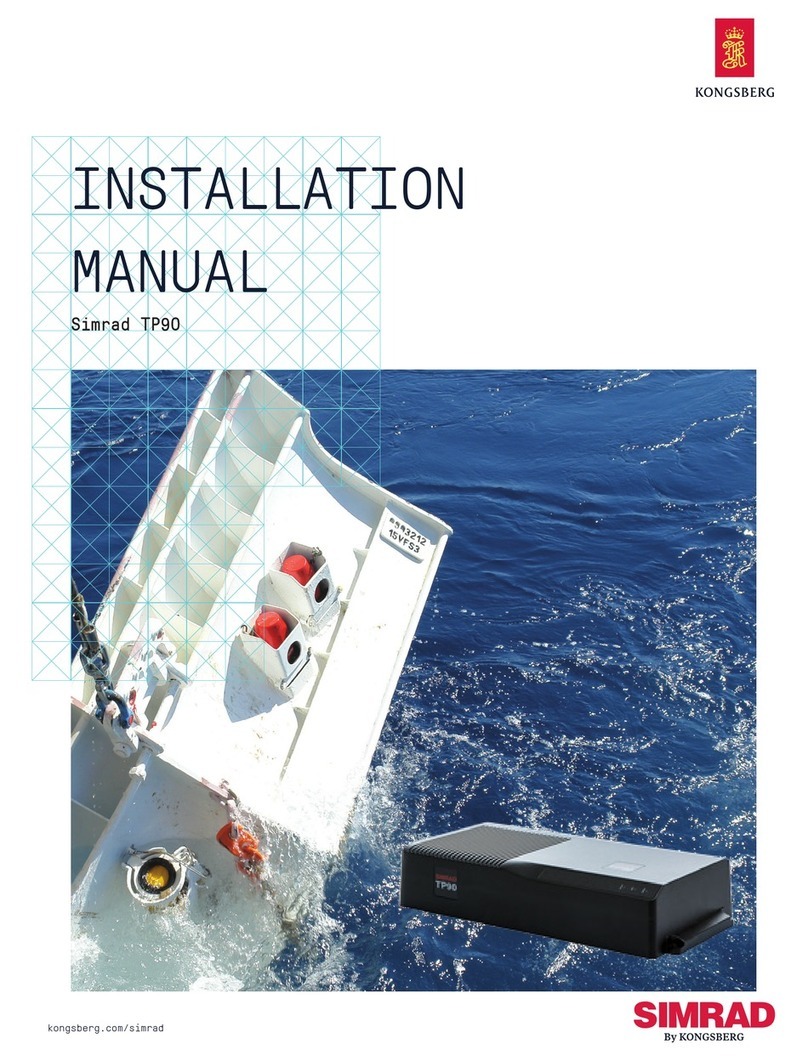
Kongsberg
Kongsberg SIMRAD TP90 User manual

Kongsberg
Kongsberg SIMRAD WBT MINI User manual

Kongsberg
Kongsberg SIMRAD IS15 Expander User manual
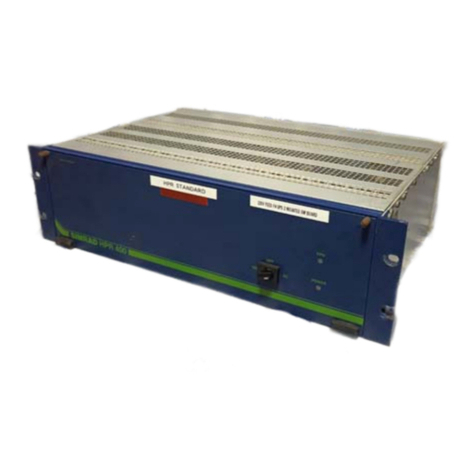
Kongsberg
Kongsberg HPR 400 User manual
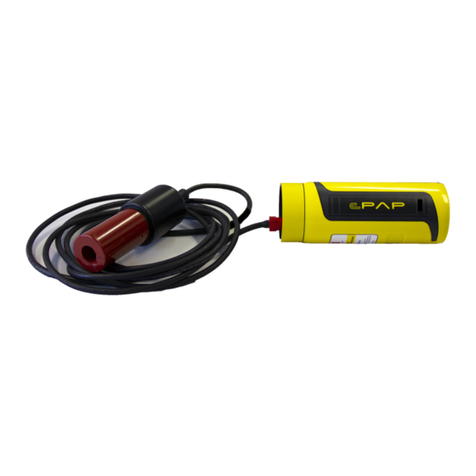
Kongsberg
Kongsberg cPAP MKII User manual
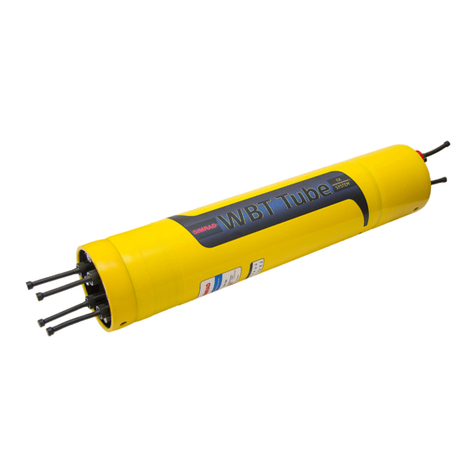
Kongsberg
Kongsberg SIMRAD WBT TUBE User manual
Popular Transceiver manuals by other brands
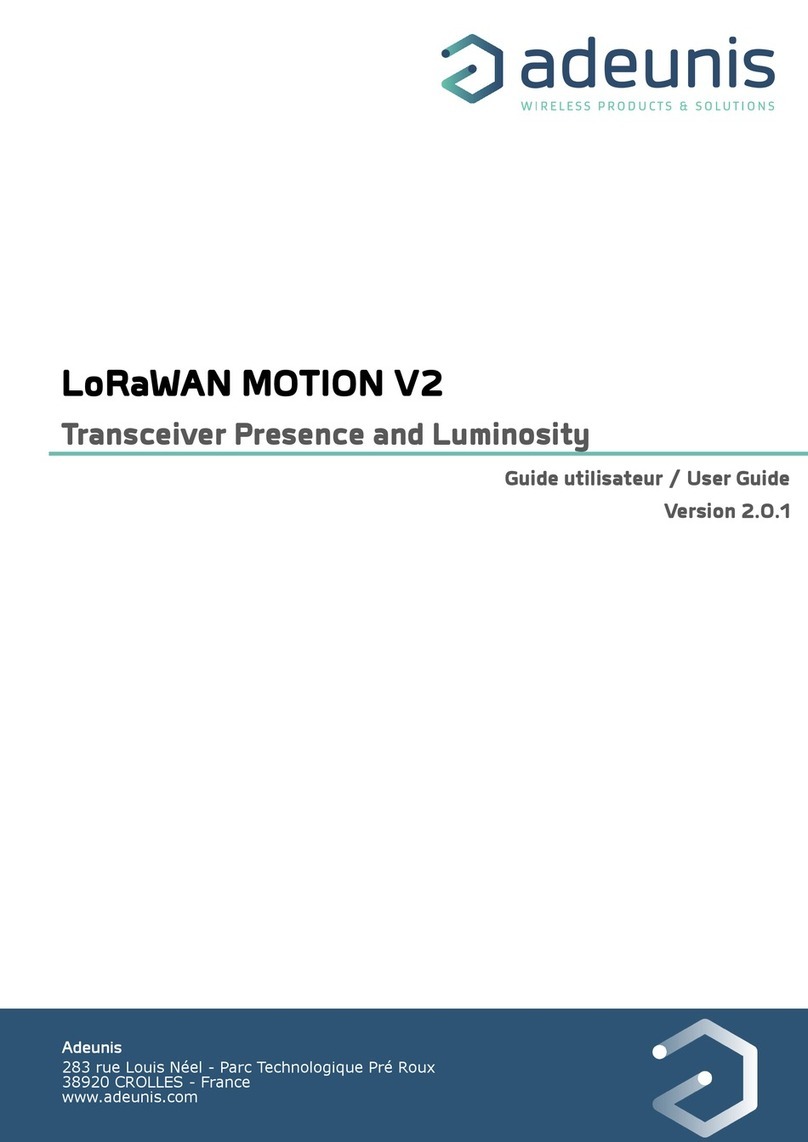
Adeunis RF
Adeunis RF LoRaWAN MOTION V2 user guide
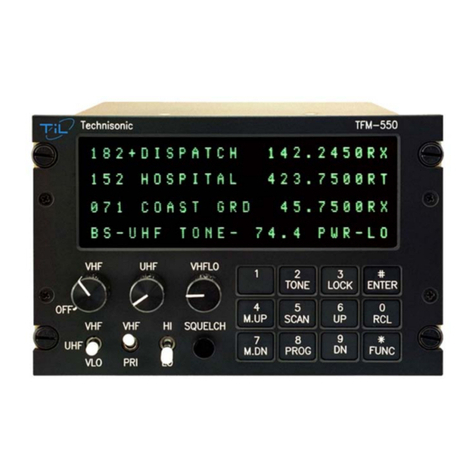
Technisonic Industries Limited
Technisonic Industries Limited TFM-550 Installation and operating instructions
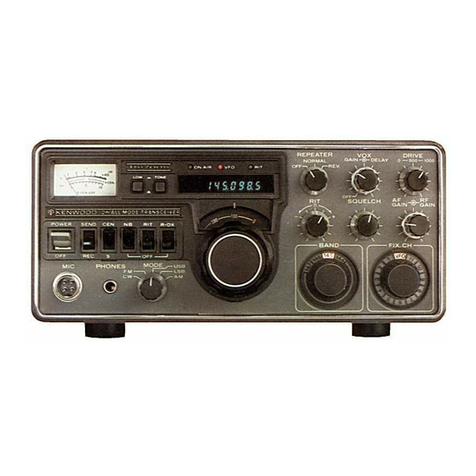
Kenwood
Kenwood TS-700SP operating manual

CYP
CYP CH-V502TR Operation manual
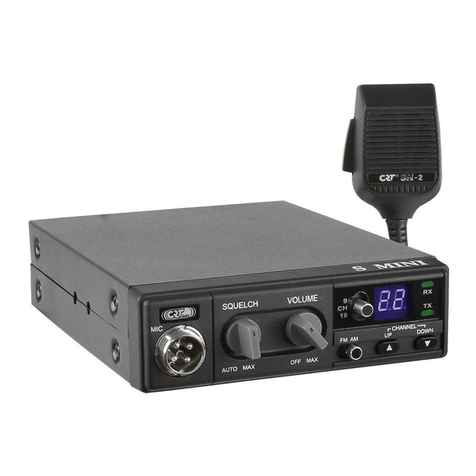
CRT
CRT S MINI owner's manual

sunair
sunair ASB-850 Installation and operation manual
